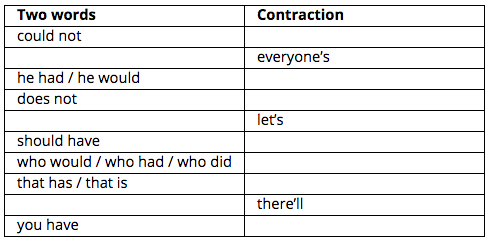Talk Like a Human (And Not a Robot)
Episode #2 of the course Conversational writing: Engage your readers by Gay Merrill
In Lesson 1, we covered two ways to talk to your reader: Picture that person and write in “you” voice.
Today’s lesson covers three tips to help your writing sound more human:
1. Write the way you talk.
2. Read it aloud.
3. Use contractions.
Write the Way You Talk
Most conversational writing advice suggests you write the way you talk. The reason is to encourage you to write using spoken language and to share your unique way of expressing yourself.
When you talk to someone, you give that person a sense of your personality through your word choice, your vocal variety, and your unique expressions, experiences, and preferences.
A way to write the way you talk is to dictate your thoughts as a first draft. I’m not suggesting, however, that you simply dictate and hit publish or send without editing.
Recording your spoken words can allow you to more quickly get your thoughts down. Once recorded, you can take note of particular expressions and words you use.
By dictating your writing, you can also increase your productivity and develop your personal writing style.
Some people use recording apps on their phone or devices to get their thoughts down.
Google Docs, for example, has a free voice-to-text feature that’s easy to use. Here’s how you can use voice typing in a Google Doc:
1. Check that the microphone on your computer works.
2. Open the Chrome browser.
3. Open a document in Google Docs.
4. Click Tools > Voice typing. A microphone box appears.
5. Click the microphone and start speaking. As you speak, the text appears in the Google doc.
6. To end typing, click the microphone again.
Once you transcribe your spoken words, you want to go over them to take note of any words and expressions you use. You’ll also want to remove filler words (um, ah, like, etc.) and do a good edit. I’ll cover more on how to make your writing clear and flow in future lessons.
Read It Aloud
Reading your work aloud helps you detect parts you need to improve.
Are there parts of your writing that are confusing? Do your words flow? Do you repeat words or use words that are boring?
If you find your writing lacks that certain oomph, your readers will most likely feel the same way.
Another suggestion, which is related to this tip, is to print your writing. With a print copy, you can highlight areas you need to improve with a pen or pencil.
Use Contractions
Using contractions to make your writing conversational is one of the easiest tips to apply.
Here’s a quick recap for those wondering what a contraction is:
A contraction is a combination of two words linked with an apostrophe into one shortened word.
We use contractions when we speak because they’re easier to pronounce. Yet, I notice a lot of writing that doesn’t use this simple conversational technique.

For example, in the image above, instead of does not compute, the contraction would be doesn’t.
Examples:
• Won’t is the contraction for will not.
• You’re is the contraction for you are.
• I’m is the contraction for I am.
Contractions can shorten your sentences and make your writing less formal or robotic.
If you want to write with a friendlier, conversational tone (and who doesn’t?), contractions are essential.
Important: It’s is the contraction for it is. Its without the apostrophe is a possessive adjective, as in, “The robot lost its memory.”
A possessive adjective comes before a noun in the sentence to show ownership and let us know who the noun belongs to.
Test: Try talking without the use of contractions and note how it sounds. (Do you feel like the robot from Star Wars?)
Exercise
1. Try recording your text using Google Docs or a device of your own that has voice-to-text capability.
2. Read the text you recorded aloud and note the areas for improvement.
3. Check your use of contractions by completing the table below:

Next lesson, I’ll share the number-one way to make your writing clear, along with handy tools to check for readability.
Have fun writing,
Gay
Recommended resource
For a full list of contractions, check out Wikipedia’s list of English contractions.
Recommended book
Finding Your Voice: How to Put Personality in Your Writing by Les Edgerton
Share with friends

